SCOTLAND
Edinburgh

Edinburgh
Edinburgh
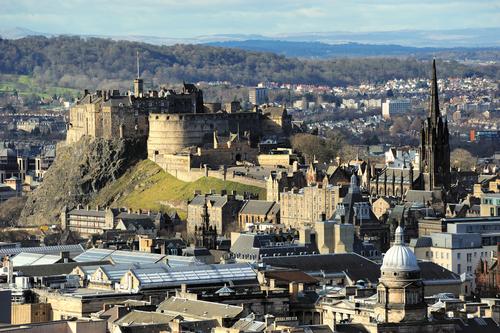 EdinburghPhoto: Saffron Blaze CC 3.0 Unported no changes made
EdinburghPhoto: Saffron Blaze CC 3.0 Unported no changes made
Edinburgh is the impressive capital of Scotland. You can see all of Edinburgh from the top of Arthur's Seat, an extinct volcano, which is one of the city's major tourist attractions in every way. The image of the historic old town is defined by Edinburgh Castle with rocky battlements. The castle is built on Castle Rock. The new district is very elegant, with beautiful Georgian terrace houses. The main street is called the Royal Mile. Edinburgh is known for the large theater festival held every summer.
| advertisement |
| Hotels Edinburgh |
Location
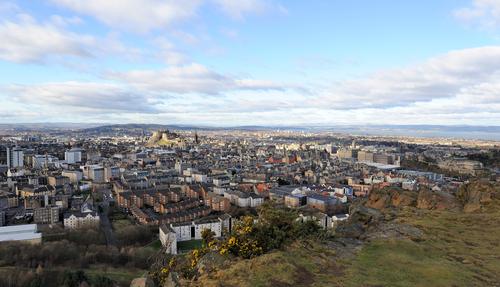 Location EdenburghPhoto: Saffron Blaze CC 3.0 Unported no changes made
Location EdenburghPhoto: Saffron Blaze CC 3.0 Unported no changes made
Edinburgh is in a particularly beautiful location, surrounded by volcanic hills on the southern edge of the Firth of Forth. On the east coast of Edinburgh is the popular resort of Portobello and in the south you can see the Pentland Hills. The large port city of Leith is nearby.
Weather
The weather in Edinburgh is typically Scottish and often unpredictable. You never know what to expect. During the summer months of May, June, July, August and September, Edinburgh often has beautiful and sunny days. July is the hottest month and has an average temperature above 20 °C. Spring is a particularly popular time to visit Edinburgh, the weather is quite mild in March, April and May, although some days can be rainy and windy. Many trees are in bloom at this time of year, and Edinburgh's parks and gardens are adorned with spring colors.
Winters in Edinburgh can be humid with less sunny days in November, December and January, but there are still clear days and good weather this time of year. The weather in Edinburgh is at its coldest during the winter months, so be sure to bring a warm coat, scarf and gloves. Snow is rare, but there are often cold, clear, frosty days. Still, Edinburgh is a great place to visit, whatever the weather there is always plenty to see and do.
History
The volcanic rock on which Edinburgh Castle stands has been inhabited since the earliest history. Although the Roman troops pushed through to Edinburgh in 79 BC, they were never really able to conquer Caledonia, and in 211 AD they retreated behind Hadrian's Wall.
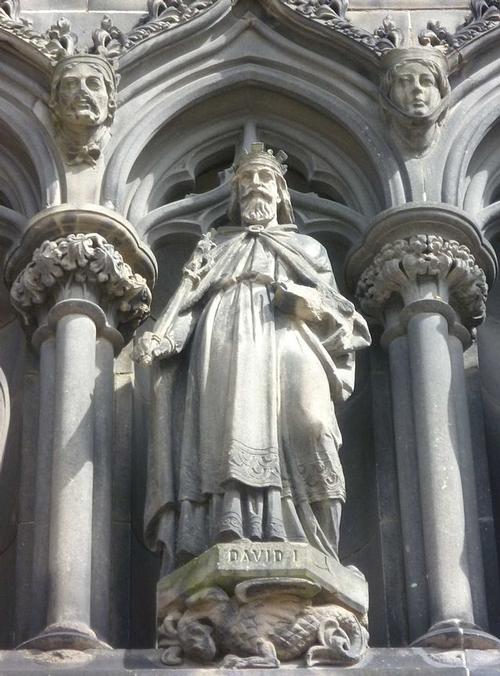 Statue King David I of ScotlandPhoto: Kim Traynor (CC BY-SA 2.0) no changes made
Statue King David I of ScotlandPhoto: Kim Traynor (CC BY-SA 2.0) no changes made
The historic city we know today can be traced directly to its medieval roots. King Malcolm III and Queen Margaret built a castle and a chapel. Their son, King David I, built an abbey in Holyrood. There was a road between the castle and the abbey, and a flourishing city grew along that road. Edinburgh has become a royal burgh under King David I along with 14 other cities in Scotland. The granting of free trade to the local community made the city rich. In 1437, Edinburgh officially became the capital of Scotland. Later, a wall was built to defend the city against the English, and the area at the base of the castle could be flooded to strengthen the northern defenses.
From 1532, the city took on an important administrative role under the Stuart dynasty. During the 16th century, Edinburgh was one of three cities (the others being Aberdeen and Perth) that had over 5,000 inhabitants. Wealth grew as a result of a lively trade in wool and leather with cities all over Europe. In 1650, the old city had become an unattractive place to live. Many of those who were able to do so decided to move to new neighborhoods, such as Leith, Dalry, and Dalkieth.
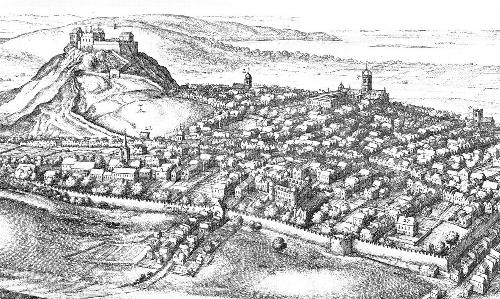 Edinburgh in the 17th CenturyPhoto: Public Domain
Edinburgh in the 17th CenturyPhoto: Public Domain
A political union between Scotland and England was concluded in 1707. From now on, Scottish politicians had to travel to London to take their seats in the new British Parliament. Lord Provost George Drummond had a vision of an even bigger Edinburgh. That included the construction of a new medical school and the draining of the lake north of the castle, which now houses Waverly Station. It was undeniable that the old town was now overcrowded. Plans were made to expand and construction started in 1795. It was a major construction project under the responsibility of 22-year-old architect James Craig.
During the 19th century, Edinburgh's middle class grew in both wealth and numbers. The city was known as a center for intellectuals. Some of the cultural and literary figures who lived here included Robert Louis Stevenson, Sir Arthur Conan Doyle and Sir Walter Scott. Other prominent figures included the economist Adam Smith and Alexander Graham Bell. Edinburgh also became a financial center. The Royal Bank of Scotland established its headquarters in the city. From 1860 there was a great need for modernization of the old town. That was because of the recurrent typhus and cholera epidemics. Sir Patrick Geddes renewed the university and made the old town attractive to the middle and professional class.
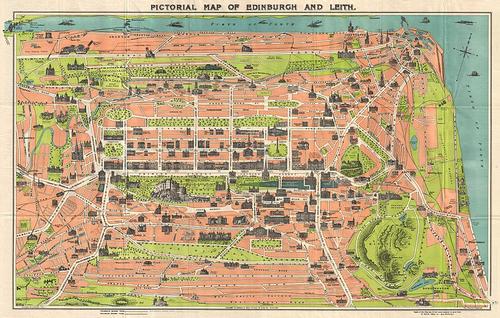 Map of Edinburgh and Leith in the 1930sPhoto: Public Domain
Map of Edinburgh and Leith in the 1930sPhoto: Public Domain
At the beginning of the 20th century, the port of Leith fell into disuse. The Old Town and New Town areas were dragged into this decline. But in 1947, the city revived when the first Edinburgh Festival took place. Thoughtless efforts to develop the city in the 1960s were halted thanks to the efforts of conservationists. Thus, the city of Edinburgh has managed to preserve much of its historical charm and architectural significance for posterity. In 1999 the Scottish Parliament was re-established after 292 years! A brand new and highly controversial building designed by Spanish architect Enric Miralles was built at the foot of the Royal Mile.
Sightseeing
There is a lot to see in Edinburgh, below you will find a selection of things to do.
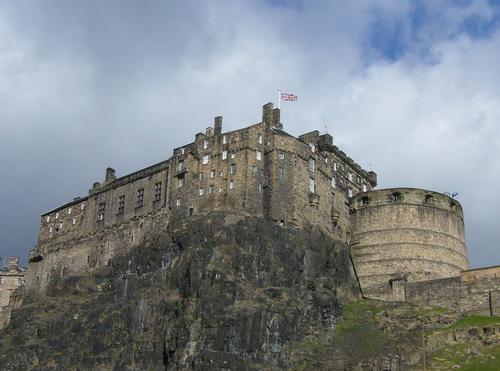 Edinburgh CastlePhoto: Kim Traynor CC 3.0 Unported no changes made
Edinburgh CastlePhoto: Kim Traynor CC 3.0 Unported no changes made
Edinburgh Castle is the famous fortress above the old town and is a well-preserved centrally located monument. The Half Moon Battery was built to protect the city's vulnerable east side and is of architectural interest. Edinburgh Castle consists of a series of sights. The Palace is now a popular museum. The Gatehouse has bronze statues of Robert the Bruce and William Wallace. On the Mills Mount Battery, a famous cannon is fired daily at 1:00 PM (except Sundays). The Little Witches Monument is where more than 300 women were burned as witches between 1479 and 1722. Edinburgh Castle offers spectacular views of many parts of the city, including the Old Town, New Town, the Firth of Forth, Fife, Ramsay Gardens, Princes Street and the Pentland Hills.
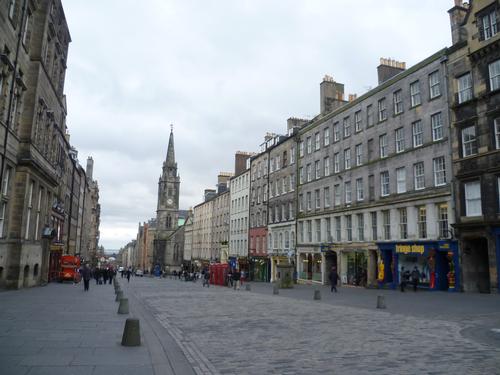 Royal Mile EdinburghPhoto: Kim Traynor CC 3.0 Unported no changes made
Royal Mile EdinburghPhoto: Kim Traynor CC 3.0 Unported no changes made
The Royal Mile is the oldest part of the city and is the road that runs directly from Edinburgh Castle to the Palace of Holyroodhouse. A number of important monuments line the Mile and serve as a reminder of the city's past and important status as a capital. The vast majority of the shops here focus on the lucrative tourist market, selling craft products and tartan clothing.
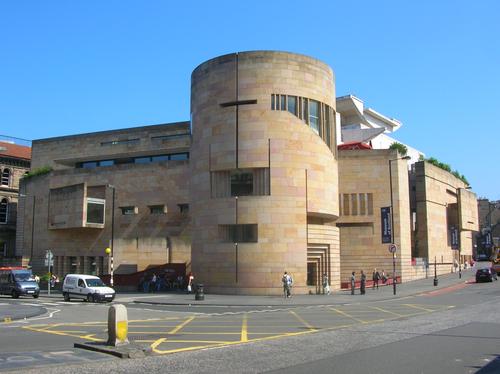 Edinburgh Museum of ScotlandPhoto: Maccoinnich CC 3.0 Unported no changes made
Edinburgh Museum of ScotlandPhoto: Maccoinnich CC 3.0 Unported no changes made
The Museum of Scotland is located in the old town, it is the most popular museum. A number of exhibitions clarify the history of Scotland. You will see historical Scottish artifacts, fossils, ancient jewelry, geological objects and much more. The museum dates from 1998, this important cultural landmark was designed by Bensin and Forsyth. The museum contains all Scottish artifacts from the National Museums of Scotland, many of which were previously on display in the Portrait Gallery.
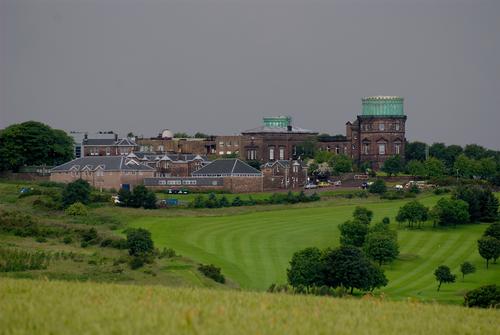 Edinburgh Royal ObservatoryPhoto: Karora in the public domain
Edinburgh Royal ObservatoryPhoto: Karora in the public domain
The Royal Observatory moved from Calton Hill to its current position in 1896, when light pollution became too strong. Located in the Bruntsfield area of the city, the Royal Observatory offers spectacular views of the city and the surrounding area and has developed into an important Scottish telescope research center. The Royal Observatory's extensive visitor center is excellent, and basic astronomy is clearly explained, along with the interesting history of Scottish astronomy.
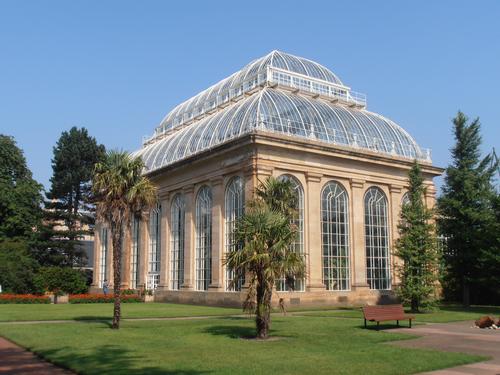 Edinburgh Botanical GradensPhoto: Ham CC 3.0 Unported no changes made
Edinburgh Botanical GradensPhoto: Ham CC 3.0 Unported no changes made
The Royal Botanic Gardens are located in the new city district, they are among the most important gardens in Scotland. Highlights include a large greenhouse filled with tropical plants, the tallest palm trees in the UK, a myriad of azaleas, an impressive alpine collection, a rockery, ponds and streams.
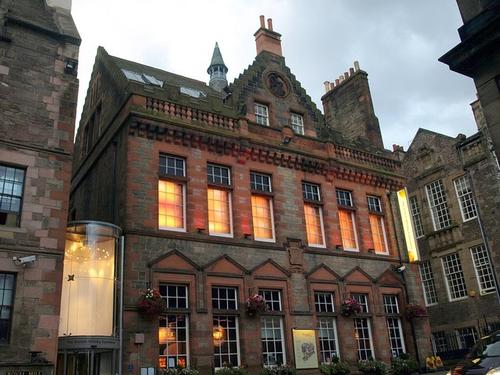 Edinburgh's Scotch Whisky Heritage CentrePhoto: Derek Harper CC 2.0 Generic no changes made
Edinburgh's Scotch Whisky Heritage CentrePhoto: Derek Harper CC 2.0 Generic no changes made
Edinburgh's Scotch Whisky Heritage Center is located in the old town and it is a fascinating place to visit. With regular tours in different languages, the distillation process of the Scotch whisky is explained. Other highlights for visitors to the Scotch Whiskey Heritage Center include a ride on a barrel for children and exhibitions spanning more than 300 years of whisky making. There is of course a (whisky) bar, a bistro and there is also a popular gift shop.
Tips
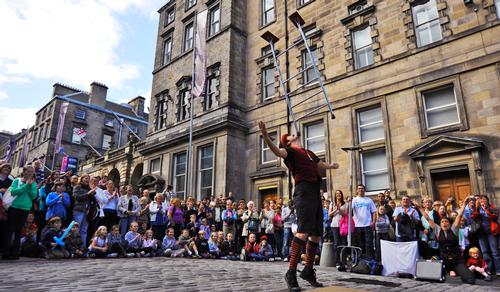 Edinburgh FestivalPhoto: Festival Fringe Society CC 3.0 Unported no changes made
Edinburgh FestivalPhoto: Festival Fringe Society CC 3.0 Unported no changes made
Visit Edinburgh from mid-August to early September, then the Edinburgh festival is held, with numerous theater performances and other performances. A special part is the Fringe Festival, with live music, literally hundreds of comedy performances and parties all over the city. Visitors can expect over 2,500 performances at around 250 different locations around the city, often from performers of great renown. Many of the small villages around the city also have a weekly market. You will see traditional customs and events, some dating back hundreds of years.
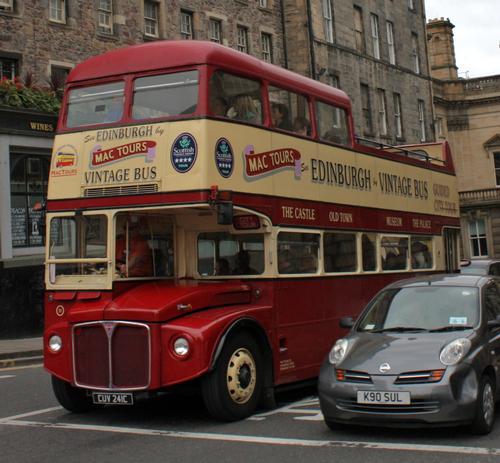 Edinburgh Bus tocursPhoto: Postdlf CC 3.0 Unported no changes made
Edinburgh Bus tocursPhoto: Postdlf CC 3.0 Unported no changes made
Edinburgh is quite hilly and you have to climb a lot. Hop on / off bus tours provide an easy way of sightseeing. The bus connects all major attractions, including numerous tourist attractions, places of interest and local monuments. Buses leave from Waverley Bridge every 15 minutes, close to the main station.
Useful links Edinburgh
BBC Country ProfilesWorld Fact Book Explore all Countries
How to call
Last updated June 2025
Copyright: Team - The World of Info